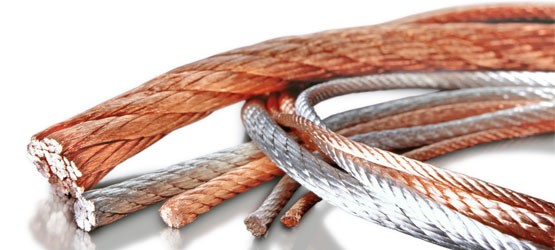Copper has been known to have multiple uses but has shown its mettle in its expansive need and use in the electrical sphere. Almost 100% of the electrical wiring used across the world is made of copper and copper alloys. Copper wire has been used in the generation of power, its transmission and distribution, into telecommunications, electronics and circuitry, and countless other types of electrical equipment. Copper and copper alloys have long been used to make different designs of electrical contacts. One of these designs is called the braided copper rope or wire.
What is braiding?
As defined in the vocabulary, a braid is defined as a complex pattern formed by intertwining and interlacing three or more strands of a flexible material such as textile yarns, wire, or even hair. It involves a zigzagging technique of weaving two or three separate strands of a flexible material, in a continuous, long and narrow structure. This technique makes the feeble material more durable, flexible and strong and has many uses.
Industrial Braiding
In the industrial revolution, braiding found its use in making wires and ropes using both synthetic and natural fibers; radios got its coaxial cables made using copper wire. In more recent uses, braiding covers the fuel pipes in aircraft as well as ships. Initially, such covers were made using fiberglass, which moved to then stainless steel and also Kevlar. Often, domestic plumbing pipes have been found covered with stainless steel braiding. So much was the use of braiding that mechanized braiding equipment has been invented to increase the speed of its production.
There are now different magnitudes of braiding machines which are used to braid different diameters and sizes of harnesses.
Manufacture of Braided Copper Rope
Being a highly malleable metal, copper can be extruded into finer strands of varying diameters. Once braided, its strength and durability are magnified. Various types of copper braids have now come into existence. A wide range of braided Copper ropes, strips and wires have now been designed – tin coated copper wires having same wires compiled together, copper pipes having tin-plating and silver coated the surface and many more.
Today the manufacturing has improved so much that such braids possess high conductivity ratio and strong anti-fatigue ratios.
The braided Copper rope is available with plain, nickel-plated, tinned, or even silver-plated surfaces, and it depends on the application.Rounded and stranded copper rope braids stand out as being highly twist-free, having a compact cutting surface and can be woven either with a left or a right-hand twist.
Uses of Braided Copper Rope
These are widely used in the following equipment:
- Cables
- Television circuitry
- Assembly wiring of a CRT
- Computer monitor
- Turbine Connectors
- Control Panels
- Induction Furnish
- Railways & Locomotive
- Earthlings Tap
- Transformers
- Electronics
- switches, thyristors and also to conduct welding currents
- Power meter connectors and many more.
Copper braids have found extensive use in the manufacturer of electrical components. A braided copper rope has been specifically designed in various forms to provide use as earthing straps, current leads, connectors, welding and cutting parts, flat and flexible conductors, shielding braids and numerous other electrical and mechanical components.


